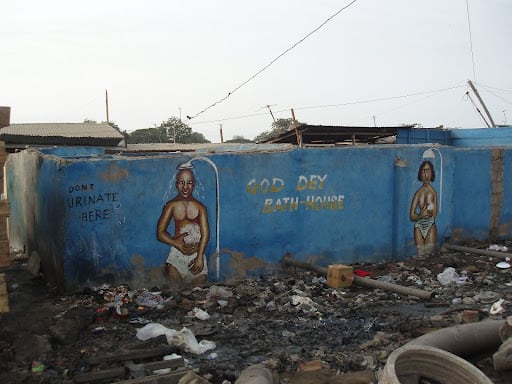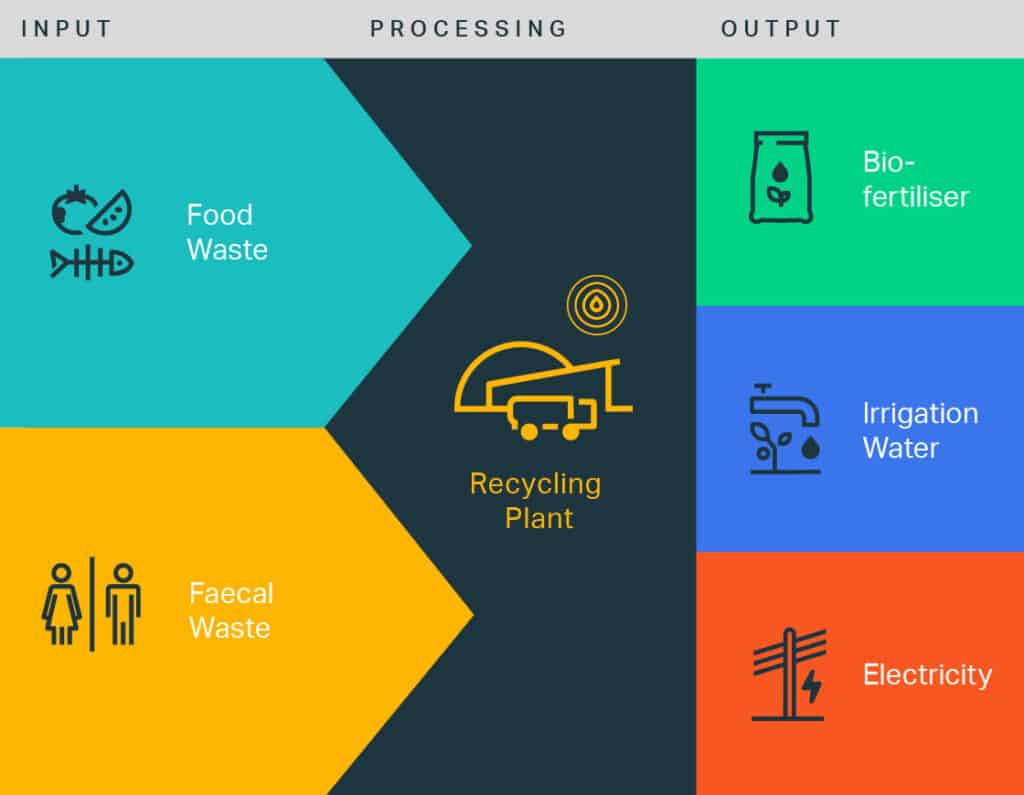Many of us are unaware that poor sanitation is a major contributor to the climate crisis. Yet, two recently published studies underline that unmanaged sanitation and a lack of waste treatment services are major contributors to global warming. Existing wastewater treatment systems that are poorly managed as well as non-sewered sanitation systems such as pit latrines and septic tanks, produce large quantities of greenhouse gas emissions, "much more than expected", according to Barbara Evans, renowned Professor of Public Health Engineering at the University of Leeds, who conducted a research on GHG emissions by urban sanitation.
Impacting emission reduction
"Improving the operation, management and maintenance of existing wastewater treatment systems as well as of non-sewered sanitation systems in developing countries creates a huge impact on the reduction of global greenhouse gas emissions", Evans states in an interview with Safisana. Safisana is currently in the process of calculating the carbon footprint and climate impact of the Safisana model on GHG emission reduction. Safisana founder Aart van den Beukel: “Studies like these help to make policymakers aware of the size of the problem. It urges them to put sanitation as one of the top priorities in their climate adaptation policies. We know our model contributes to the reduction and avoidance of greenhouse gas emission, but we want to be able to prove the size of our environmental impact with hard figures.”

The study led by Evans in collaboration with the University of Science and Technology Beijing calculated that sanitation is estimated to contribute 4% of global manmade greenhouse gas (GHG) emissions, including 2-6% of global methane and 1-3% of global nitrous oxide emissions. Knowing that nitrous oxide is 265 times more potent than CO2 in its contribution to global warming, indicates the seriousness and scale of the sanitation impact on climate change.
Kampala citywide sanitation emission
‘‘Emissions from poor sanitation are being underestimated”, says Professor Barbara Evans. Evans also published an alarming case study last year on citywide sanitation in Kampala, revealing much higher greenhouse gas emissions than expected. “Sanitation in Kampala produces 189 kt CO2 per year, which may represent more than half of the total city-level emissions.”

According to Evans, Kampala is exemplary for the state of sanitation in many cities in low-income countries where greenhouse gas emissions are produced throughout the sanitation value chain, characterised by storage of faecal waste in septic tanks, discharge from tanks and pits to open drains, illegal dumping of faecal waste, leakage from sewers, wastewater bypassing treatment, and uncollected methane emissions at treatment plants. “All of these factors are contributing to high levels of greenhouse gas emissions”, Evans concludes.
Active management is key
But there is also good news. A recent study titled Unlocking carbon credits for sanitation done by Container Based Sanitation Alliance (CBSA) on the viability of carbon credits for sanitation businesses, states that “active management almost eliminates emissions”. Active managements includes better operation and maintenance of existing systems, but also frequent emptying of latrines and tanks, and proper waste treatment services.
The study shows the key role sanitation providers of the Container Based Sanitation Alliance, and waste treatment providers such as Safisana can play in climate change mitigation of greenhouse gas emissions. Safisana is currently in the process of calculating and certifying the climate impact of its circular solution in terms of carbon emission reduction and avoidance. Professor Evans confirms that recycling solutions like Safisana, which capture methane, contribute to climate change mitigation in multiple ways:
- Collection and treatment of faecal waste in an anaerobic digester like ours prevents methane from being released into the air
- Collection and treatment of organic and food waste treatment reduce the amount of waste dumped into landfills, which also emit huge amounts of methane and carbon; currently, 18% of global anthropogenic emissions are caused by landfills
- The production and use of biogas and organic fertilizer replace the use of fossil fuels and chemical fertilizer - which leads to an avoidance of emissions.


Calculating climate impact

The next step is to translate these assumptions into hard and convincing figures. Therefore, we have recently commissioned Ingenia Consultants & Engineers to calculate the footprint of our current plant in Ashaiman.
For new projects and partnerships with governments and large industries, carbon footprint and impact calculations need to be approved and certified by an internationally recognised standard for measuring and certifying carbon reduction and emission avoidance, like ISCC. “It is a difficult and pioneering process”, says Michiel Bakkum Head of Business Development at Safisana who is leading the process. “One of the obstacles that we encountered and tackled, is that faecal matter as a resource was not yet officially acknowledged as a category that can be certified, like, for instance, wastewater does. As a first step, we managed to get the product listed with ISCC. The next step in this certification process is to make a baseline analysis of emissions with and without the application of, in this case, the Safisana solution. The comparative impact or net result of Safisana will be determined in an assessment in the coming months.”
Carbon credits for sanitation
The study done by the Container Based Sanitation Alliance (CBSA) also investigates the possibility of the sanitation sector entering the carbon credit market. The goal of the study using IPCC default factors and CDM methodologies was to ‘understand whether carbon credits can become a viable income stream for sanitation providers and help to reduce the funding gap’ many of the sanitation service providers are dealing with. The outcomes are moderately positive. “Carbon credits can be a significant step towards accessing other climate funds”, Isabella Montgomery of CBSA concludes. “However, several factors still limit the likeliness of success for the many small-scale projects in the sanitation business, including the exorbitant cost of certification, consultant fees, and the significant monitoring burden.” CBSA is currently working to address these issues where possible to make carbon credits more accessible to CBS operators.


Meanwhile, Safisana is collaborating with CBSA members such as Clean Team Ghana to create real-time impact, at our recycling pilot in Kumasi. Conversations with toilet providers Loowatt and Sama Sama in Tamale are ongoing to see how we can team up in the treatment of the faecal matter, and contribute to reducing environmental pollution and climate impact together. According to the UN Climate Agreement, Greenhouse gas emissions need to be limited by 2030 by 45 % to get on track to 1.5°C global warming.


